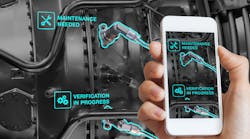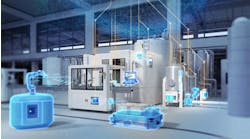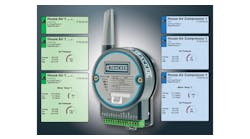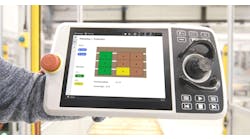More than two centuries ago, German philosopher Immanuel Kant described virtual reality as an existence within our minds, rather than the physical world. Today, virtual reality (VR) is an established technology that has been deployed in various industries, including gaming, marketing and manufacturing. But, what about augmented reality?
Augmented reality (AR) describes a digital enhancement to the external world. A good example of this would be Nintendo’s Pokémon Go app, which overlays images of characters onto the real world, through a user’s mobile phone screen. There are several popular examples of successful augmented reality. However, most of these have been for gaming or novelty purposes.
In the manufacturing sector most AR applications are still in their infancy, but they do have great potential. The beauty of augmented reality is its ability to present much more than digital characters or images. Using the technology, you can also overlay instructions, statistics and information. For an example, looking at a piece of equipment through an augmented reality device could overlay important data related to it, such as its current performance, output, and temperature.
Microsoft’s HoloLens mixed reality headset, a combination of augmented and virtual reality technology, has already been deployed in some manufacturing facilities for this reason. However, some of the most beneficial areas of its use is to help solve problems related to maintenance.
Let’s say some manufacturing equipment is broken. Using a mixed reality headset, a technician could simultaneously examine the physical parts of the machine, while also viewing text, instructions and images to help them to fix the problem. For example, the information that technicians need when checking or repairing an industrial motor can be projected directly on the part they are operating on. This eliminates the need to consult charts and instruction manuals, speeding up the process. Moreover, the information projected guides the operator chronologically, so that even a relatively unexperienced worker can perform the necessary repair.
This is particularly advantageous for complex equipment or facilities with inexperienced personnel. In these instances, augmented reality can be used to deliver expert support remotely from the original equipment manufacturer (OEM), without no need to fly in technicians or specialists from the other side of the globe to resolve a particular issue.
Industrial robots provide a good example of this flexibility. Let’s imagine a six-axis robot has malfunctioned, but there are no employees on site with the expertise to fix it. Using a headset for remote maintenance would allow any employee with an AR device to be guided by a specialist — perhaps a robotics technician, in Japan — through the inspection, repair, or reset sequence.
The expert will provide support by simulating the actions the employee should perform.
This same technique can also be used to train new employees, a promising possibility considering the current shortage of skilled operators, technicians, and engineers.
In fact, training new employees is one of the most valuable areas for augmented reality in manufacturing. One of the biggest challenges to onboarding new team members is ensuring that each employee is aware of proper protocols and procedures. Uncertainties lead to safety issues, particularly in processing industries with dangerous operations.
In this instance, a mixed reality headset may not be appropriate because these usually are designed like VR headsets, so they can be obstructive and distracting to the wearer. A smaller device, such as a tablet, mobile phone, or a pair of digitally enhanced glasses, would be ideal.
Let’s say a new worker has assigned to operate some processing equipment that they have never used before. Using augmented reality technology, the device could automatically provide machine data to help the operator to complete the task correctly and safely. For example, delivering alerts if the machine is outside of the specified speed or temperature range.
Jaguar Land Rover has demonstrated the potential of augmented reality for training, in a joint project with Bosch and its REFLEKT ONE software system. The project developed an application that digitally visualized an ‘X-ray’ onto the dashboard of some of its vehicles. Using the technology, the app allowed technicians to see everything in operation behind the vehicle’s paneling — so there was no need to remove and reinstall the dashboard, simplifying training, and saving time and cost.
It has been two centuries since Kant envisioned. It is only recently that the technology is fulfilling its potential value for manufacturing. While these emerging applications may not be as novel as catching Pokémon, the technology is set to make a significant impact to training and maintenance.
AR does more than present digital characters, images, or other information for manufacturing operators and technicians. It imports expertise to the workplace.
Mark Howard is the U.S. country manager for EU Automation, an automation parts supplier. Contact him at [email protected].








